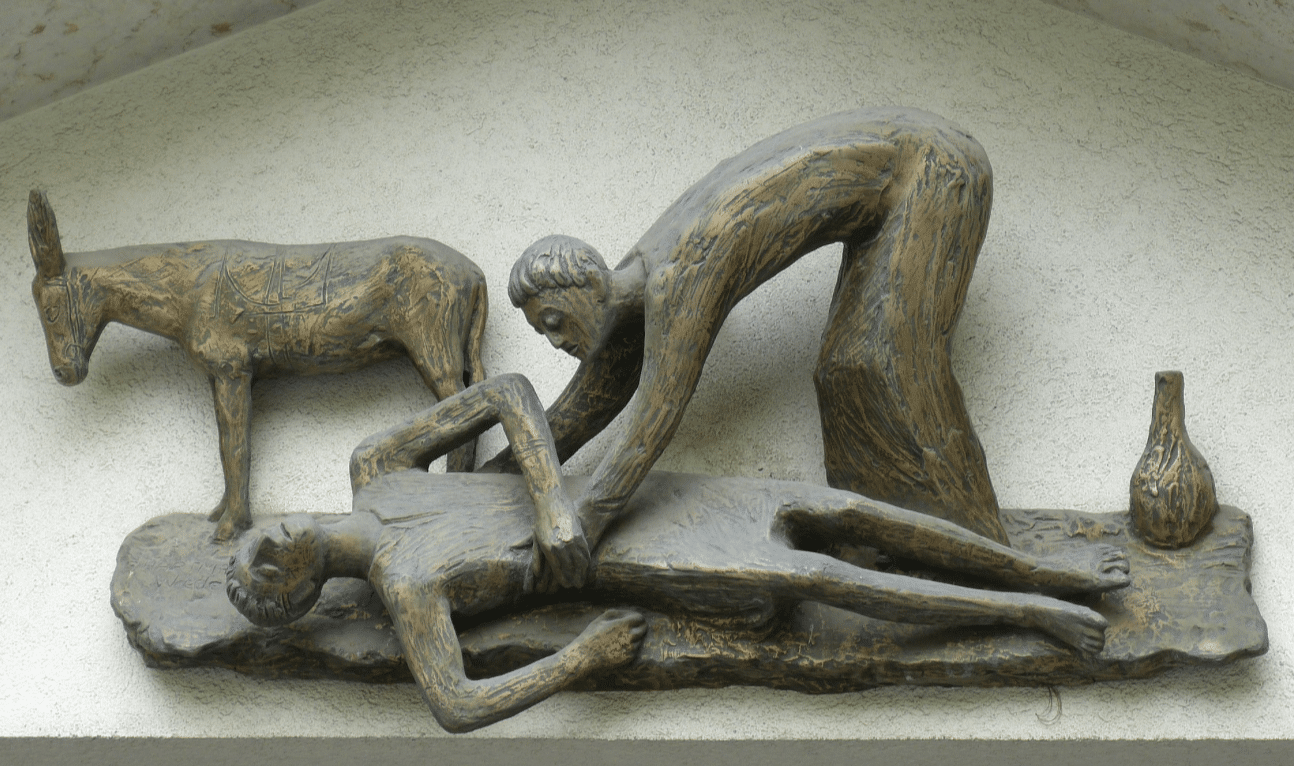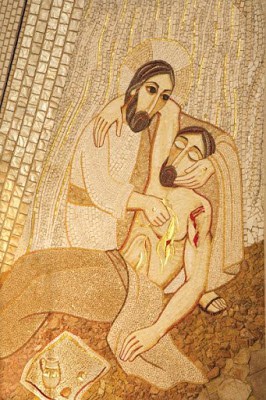Q&R Propitiation, Expiation or Mercy Seat? Brad Jersak
Question
Thank you for taking the time to share your knowledge and experiences of Jesus, his Father and the Holy Spirit. I also appreciate being able to contact with a question regarding the word “propitiation” in Romans 3:25 (“whom God put forward as a propitiation by his blood”) in the context of a non-violent God. How should we understand that term?
Response
What an important question, especially when readers are often at the mercy of the theology of translators, which is why we compare translations and check in with those who have more time to dig a little deeper.
1. The Greek word you see translated as propitiation is hilasterion, which is also related to the word group hilasmos.
2. The question is how best to translate hilasterion. The pagans could use that term for:
a. propitiation: giving their gods a gift to appease a god’s wrath, and so getting the god to be reconciled to people, or…
b. expiation: their gods could remove whatever offense was alienating us, and so the god was getting the people reconciled to itself.
So, some famous Christian theologians argued this on either side: most famously, C.H. Dodd argued that God expiated (removed, washed away) our sin (by forgiveness) to reconcile us to himself. Meanwhile, Leon Morris argued that Jesus was a sacrifice of propitiation that appeased God’s wrath so God could be reconciled to us (hence penal substitution).
3. But the thing is, to begin with, we’re not pagans. For us, the backstory for the Christian use of hilasterion is NOT pagan sacrificial religion. The word was used by the people of God in the Septuagint, a Greek translation of the Old Testament composed before the time of Christ and cited frequently in the NT.
In the Septuagint, hilasterion primarily refers to the mercy seat of the ark of the covenant. This is where God would sit as a throne … a throne of grace where God offered mercy. Hilasterion can be defined as “the means or the place where sins are forgiven and reconciliation happens.” In the NT, where is the mercy seat where we see God seated? It is the Cross. And rather than demanding a blood sacrifice to appease God’s wrath for our sins (propitiation), we see God in Christ offering himself to us as a mercy gift of reconciliation and welcoming us to receive his forgiveness, freely offered. It is by grace that we are saved, not through violent transactional religion. It is likely that this was the sense in which the apostles John and Paul used the term.
And it’s not just that he forgave our sins, as if sin were only ‘wrongdoing.’ Sin goes deeper than that. Stephen Freeman writes,
- [Sin is] a violation of the very constitution of our being and of the world around us. … it is “disintegration.” St. Athanasius and a number of other fathers described it as a movement towards non-being. Sin is substantial. It can be healed and washed, excised and destroyed.
- And this brings us back to the Mercy Seat. Christ is indeed the “Mercy Seat” for our sins. And as our Mercy Seat, he destroys them, cleanses them, remits them, carries them away, etc. Christ’s bearing of our sin is the bearing of our disintegration, our drive towards non-being. It is the recreation of his creation.
4. The NIV tried to play it neutral between propitiation and expiation, by translating the term “atoning sacrifice,” but again, what do we mean by atonement. The English term was originally coined from at-one-ment, and means reconciliation. Yet we’ve distorted the English word atonement through the centuries into almost its opposite (appeasement). Instead, we should think of atonement as the reconciliation we experience through Christ as he forgave humanity from his mercy seat.
5. And finally, what do we mean by sacrifice? Do we imagine sacrifices as offerings of appeasement like that of the pagan religions? No, for Christians, we think of sacrifice as a facet of self-giving love. It is more like the sacrificial love of a mother when giving birth to a child, or the self-sacrifice of a first responder rushing into a burning building to save someone trapped in the flames. Surely these latter illustrations are descriptive of God’s sacrifice for us.
I go further into our theology of the Cross in A More Christlike God, which I hope will further clarify this cruciform vision of divine Love.
P.S. Though I still prefer to use the LXX “mercy seat” and link it to the Cross, I also found the expression “reconciliation gift” helpful in conveying the meaning of the mercy seat metaphor. You’ll see that expression used of hilasterion in the link below:
http://theogeek.blogspot.ca/2007/07/hilasterion-in-romans-325.html
Unfortunately, a lot of the online stuff is still loaded with the penal substitution propaganda (and promoted as the gospel itself), and this really imposes its transactional system onto the word, which becomes self-fulfilling of the theology. I.e. it means this because I need it to mean this. Happily, we’re now seeing a better and much more beautiful way forward as we explore the glory of the Cross of Christ.











 Plain Truth Ministries | Box 300 | Pasadena, CA 91129-0300
Plain Truth Ministries | Box 300 | Pasadena, CA 91129-0300

